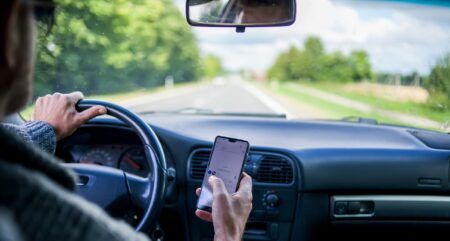The Georgia Department of Transportation (GDOT) has installed Internet of Things (IoT) technology from Applied Information and AT&T to improve road safety in school zones across the state.
Powered by connectivity provided by telecommunications giant AT&T, the US state of Georgia has become the first state to deploy Applied Information’s IoT-connected smart beacon technology for school districts statewide.
The unique program connects the flashing signs that are intended to slow drivers down as they pass by a school to the IoT, in order to make them more reliable and more responsive in the event of a change of schedule caused by inclement weather, biannual time changes, school holidays or other disruptions.
The Glance School Zone Beacon System was developed by Applied Information, in collaboration with AT&T for secure wireless connectivity, and Alabama-based contractor Temple Inc., which provides for installation and maintenance services.
The technology is being installed at more than 300 schools in 118 Georgia counties in time for the start of the 2018 school year. Each smart beacon has its own cellular modem to handle all communication, enabling traffic engineers using their smartphone or tablet to determine if the beacons are operating correctly and, if necessary, instantly alert the appropriate resources in the event of lamp or battery failures. AT&T’s 4G/LTE mobile network will power the smart beacons and AT&T’s IoT Control Center platform will be used to manage the system on the backend.
The Applied Information and AT&T collaboration provides a complete suite of Glance-branded Smart City connected transportation technologies. Applied Information’s Glance Smart City Supervisory platform enables cities to manage all their traffic and ITS assets on one cloud-based application, including: traffic signals, school zone flashers/beacons, connected crosswalks, emergency vehicle preemption, transit and freight priority, connected traffic calming devices, and other ITS systems.
The company’s complementary TravelSafely smartphone app connects drivers, cyclists and pedestrians, together with the transportation infrastructure, to create a safer mobility system for all users.
“Making school zone beacons smarter is a perfect example of how we can use connected technology to improve safety on our roadways,” said Bryan Mulligan, president of Applied Information. “GDOT is to be commended for taking the lead to improve safety around school zones on such a large scale and in such a short amount of time to be prepared for the new school year.”
Mike Zeto, vice president of IoT solutions and general manager of Smart Cities at AT&T, commented, “Mobile technology is becoming more integrated into existing traffic equipment to help make school zones safer for school children and drivers. Our initiative with Applied Information is a great example of our growing effort in public safety to help cities become safer and more connected to their citizens.”




